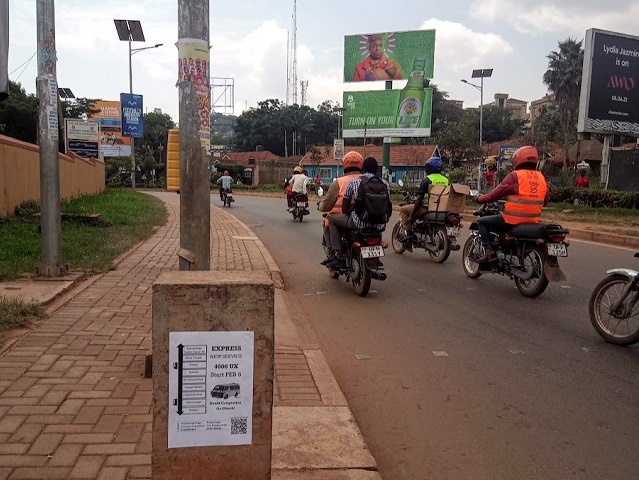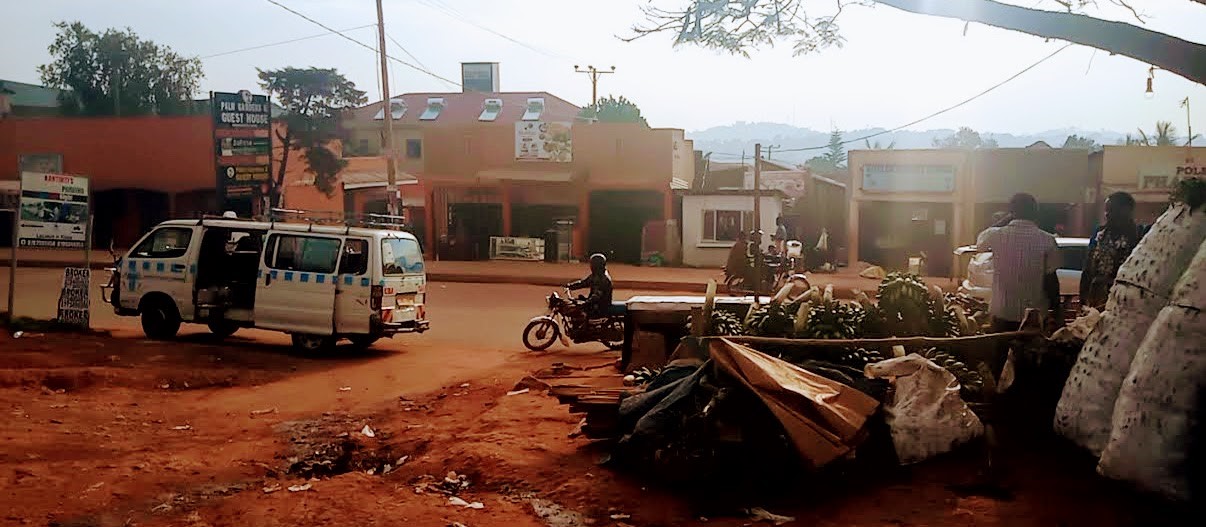
Do informal transport networks in African cities provide equitable services for everyone that needs them? Unsurprisingly, the answer is often no. Operators frequently prefer to drive the safest and most central routes, inadvertently prioritizing commuters traveling to formal jobs in the city center and avoiding the most remote and low-income communities. Informal transport networks also tend to create radial and centralized systems which make travel between neighborhoods, markets and other locations especially inconvenient and time-consuming, disproportionately impacting women and informal workers. So, how can we both support and improve informal transport services?
To test some of these questions and imagine solutions, researchers from University of California, Berkeley’s Department of City and Regional Planning (including myself) and Makerere University’s Urban Action Lab, with support from the International Growth Center, collaborated with the Uganda Taxi Operators Federation and the Amalgamated Transport and General Workers’ Union of Uganda to start a new informal transport route. Together, we designed the new route with informal transport stage managers, operators and drivers. And then, we tried it out.
The route was developed to bypass the congested downtown and provide a direct, non-radial connection between residential neighborhoods, markets, health centers and employment zones. Previously to go between these areas passengers would need to take an expensive motorcycle taxi (boda boda), walk or make multiple connections – adding time and cost.
Following approval of the proposal in February 2023, the project funded 10 vehicles to operate on the new route for three weeks. At the start, we subsidized 100% of operating costs – vehicle rental, fuel, security, incomes for the driver and conductor – and then gradually reduced the subsidy as more passengers were attracted to the route. Following the end of the project, a section of the route continued to operate independently and is still in operation over one year later. For a total of approximately $5,000, we were able to create a new connection in the city, serving thousands of people.

Our first passengers immediately alerted us to a gap in our own proposal: we lacked connection to a local wholesale market. Transport operators of the new route quickly established a small diversion and then a permanent stop. Many of the passengers utilizing this route are women working as small-scale market and street vendors who make multiple trips per week to the wholesale market to pick up goods for sale. Vendors previously relied on long, risky, early-morning walks, so they took up the new route enthusiastically. Despite the operators’ deep familiarity with the neighborhood, why had no services been established until now?
Informal operators are not to blame; they operate on shoestring budgets with no public support, often facing criticism and marginalization from authorities. Alongside low and unpredictable incomes, informal operators experience harrowing working conditions, physical and mental health struggles, and long workdays. Public transport is almost always unprofitable in wealthy cities around the world, yet informal transport workers, with no access to credit or capital, are expected to provide social and mobility justice to fast-growing megacities.
Starting a new route is complicated, expensive and risky, so successfully coordinating, allocating and implementing the proper resources does not happen without risk and sacrifice. But this pace of change is far too slow for fast-growing cities with diverse mobility needs. In this project’s case, a small initial investment paired with the creation of open dialogue between operators, the research team and other stakeholders allowed us to support informal drivers’ businesses and improve access for a population in need.
A year later, a portion of the new route (the wholesale market diversion and stop requested by locals) regularly operates two to five minibuses per day and continues to grow. These minibuses operate both on the new route and on the main route, reducing the risk for informal transport operators to utilize the new route until more passengers learn of it, reducing queues for drivers on the main route and providing flexibility to accommodate the influx of passengers on market days. A single short-term investment was able to “seed” a new service by covering the riskiness of the initial operation.
For cities, but also for communities and even operators, this approach can help understand current mobility needs and provide the necessary services quickly, collaboratively and without disruption. Establishing a new informal route may seem complicated, but initial testing of potential new routes only requires cooperation and a small budget. When new routes are subsequently established and successful, they can reveal additional mobility needs which operators are now in a better position to provide for, supporting rather than undermining informal transport workers’ livelihoods. Together, cities can build trust and insight into the complex landscapes informal transport drivers and managers need to navigate, as well as into the needs – particularly the unmet needs – of passengers and communities.
Tamara Kerzhner is a postdoctoral fellow at the University of Toronto’s School of Cities and 2021 Lee Schipper Memorial Scholarship Winner.





